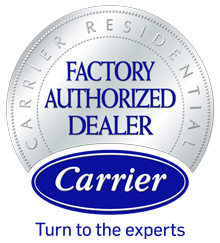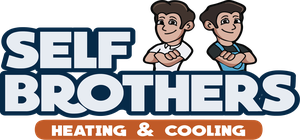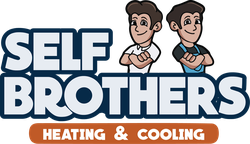One of the most important aspects of choosing an HVAC system for your home or business is its SEER or Seasonal Energy Efficiency Rating. Prior to 2015, the national minimum SEER rating for a residential HVAC system was 13, regardless of your location. Now, however, the acceptable minimum will depend on your area, and in some cases, the type of system you choose to install.
Seasonal Energy Efficiency Ratio
The SEER rating, determined by the AHRI (Air-Conditioning, Heating, and Refrigeration Institute), is to ensure that HVAC systems are productive, safe, and environmentally friendly. The rating calculates the average cooling output a unit provides versus how much energy it consumes, when it’s run in accordance with the kind of yearly use patterns typical in average homes. The higher the rating, the better energy efficiency the system provides.
While an HVAC unit with a high SEER rating may cost more, you’ll see a decrease in utility bills for your home or business, thanks to the system’s effectiveness in conserving energy efficiency. What’s more, using less energy also decreases your carbon footprint, so you can feel good about your contribution to a healthier environment.
SEER Ratings
The U.S. is broken down into three regions based on the climate for the states included in each of the regions, which means the SEER ratings can differ from state to state. That’s why it’s important to ensure that your HVAC system meets the new SEER requirements in your area.
- North – Most of the U.S.—including Alaska—falls into the Northern region for SEER ratings. If you live in this area, the new minimum is 14 SEER for packaged HVAC systems, and 13 SEER for split systems, where the unit components are housed both outdoors and inside the home. Heat pumps must be rated 14 SEER, or 8.0 HSPF for packaged units, and 8.2 HSPF for split systems.
- Southwest – The Southwest region includes Arizona, California, Nevada, and New Mexico. In these states, the minimum SEER rating for AC units is 14, no matter what kind you purchase. For heat pumps, the minimum HSPF is 8.0 for packaged units, and 8.2 for split systems, while the minimum SEER is 14 for all types. All air conditioning systems must also meet another measurement, the EER rating, which calculates the system’s efficiency as though outside temperatures were a consistent 95 degrees every day (rather than a range of temperatures, as in the SEER rating). This makes it a more accurate indication of performance for homes in high heat climates. For packaged systems, the EER rating is 11. For split systems, it can vary depending on the unit’s weight—for units less than or equal to 3.5 tons, it is 12.2 EER, and for those greater than 4 tons, it is 11.7.
- South – The southern region includes Texas, Oklahoma, Arkansas, Louisiana, Mississippi, Kentucky, Tennessee, Alabama, Florida, Georgia, South Carolina, North Carolina, Virginia, Maryland, and Delaware, as well as Hawaii and the District of Columbia. Units in these areas must have a SEER rating of at least 14. The heating system must be rated 14 SEER, or 8.0 HSPF for packaged units, and 8.2 HSPF for split systems. There is no EER requirement.
If you have an HVAC gas pack instead of a heat pump, it must have a minimum SEER of 14, no matter your location.
Choosing the Right SEER Rating
When choosing your new HVAC system, don’t assume that bigger means better, since the square footage to be heated and cooled is an important consideration. A unit that is too big for a small area will not work efficiently—in fact, it will over compensate. A system that is too small to keep a larger area comfortable will work overtime, running up the utility bill and putting additional strain on the unit. One of the biggest factors in determining the HVAC efficiency is the thermal rating of your property. This means addressing any necessary improvements that affect the temperature in your home or business. Here’s how you can ensure a better energy efficient output:
- Reseal and add a double layer of insulation to ductwork, since ducts can become deteriorated or damaged over time.
- If your property does not have an attic exhaust fan, have one installed.
- Add a double layer of insulation in the attic/ceiling to improve thermal efficiency.
- Install solar screens and low-E windows, or add a radiant barrier to your roof.
To ensure that you’ll see a return on investment for the cost of your new unit, you’ll need to consider how long you plan to stay in your home. For example, if you purchase a more expensive 36,000 BTU unit with a 16 SEER that costs $6,000, you’ll have better efficiency—but it could take up to 9 years before you fully recoup the cost of the initial investment. In this case, a less expensive unit that can accommodate the square footage and a lower SEER rating may be the wiser choice.
Benefits of SEER Ratings
As long as your home is properly insulated, devoid of areas where air can leak in or out, you can expect better efficiency—and therefore, decreased energy bills. Even better, if you purchase an Energy Star certified air conditioners, you’re eligible for federal tax rebates, which helps defray the cost of the equipment. And make sure to check with your local utility company, since they may offer rebates for installing an energy efficient air conditioning and heating system.
While your final choice will depend on a variety of factors, you can get a general feel for the annual energy savings from different systems by performing a simple cost calculation, which will take into account your individual system’s efficiency ratings, the size of your home, and the size of your unit, among other factors.
If you have more questions about SEER ratings or would like to get a free customized in home estimate, give Self Heating & Cooling a call at 678-909-6377











